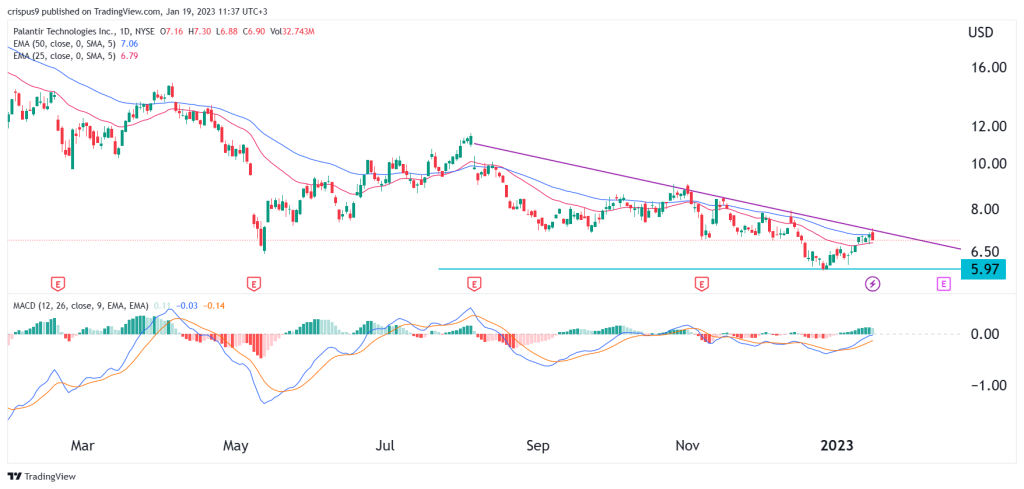Becoming A Better Ally: A Guide For International Transgender Day Of Visibility

Table of Contents
Educate Yourself on Transgender Issues
Understanding the transgender experience is the cornerstone of effective allyship. This involves learning about gender identity, expression, and the challenges faced by transgender individuals.
Understanding Gender Identity and Expression
Gender identity is an individual's internal sense of being a man, woman, both, neither, or somewhere else along the gender spectrum. Gender expression refers to how someone outwardly presents their gender through clothing, behavior, and other means. Crucially, these are distinct from sex assigned at birth. For more information, explore resources from reputable organizations like GLAAD (glaad.org), The Trevor Project (thetrevorproject.org), and the Human Rights Campaign (hrc.org).
- Cisgender: A person whose gender identity aligns with the sex assigned at birth.
- Transgender: A person whose gender identity differs from the sex assigned at birth. This encompasses a wide range of identities and experiences.
- Gender Non-Conforming: Individuals whose gender expression doesn't conform to societal expectations associated with their assigned sex at birth. This is separate from gender identity.
- Inclusive Language: Using terms like "partner" instead of "husband/wife," avoiding gendered assumptions, and respecting chosen names and pronouns are crucial aspects of inclusive language.
- Spectrum of Gender Identities: The spectrum of gender identities is vast and diverse, including but not limited to: transgender men, transgender women, non-binary, genderfluid, agender, and many others.
Learning about the Challenges Faced by Transgender People
Transgender individuals face significant disparities and discrimination across various aspects of life. Understanding these challenges is critical to becoming a better ally.
- Impact of Transphobia and Discrimination: Transphobia, prejudice against transgender people, manifests in various forms, including verbal harassment, physical violence, and systemic discrimination. This leads to significant mental health issues and reduced opportunities.
- Safe Spaces and Support Systems: Creating and supporting safe spaces, both online and offline, is essential. These spaces provide crucial support and a sense of belonging for transgender individuals.
- Mental Health Challenges: Transgender people are at a significantly higher risk of mental health issues due to discrimination and societal pressures. Support and understanding are crucial.
- Relevant Statistics and Research: Numerous studies highlight the disparities faced by the transgender community. Searching for research from academic databases and reputable organizations will provide valuable insights.
Respecting Transgender Individuals and Their Identities
Respecting transgender individuals means actively affirming their identities and challenging transphobic behaviors.
Using Correct Names and Pronouns
Using someone's correct name and pronouns is a fundamental aspect of respect. Misgendering, even unintentionally, can be deeply hurtful and invalidating.
- How to Correct Someone: Politely and calmly correct someone who misgenders you. For example, "My pronouns are he/him."
- Impact of Misgendering: Misgendering reinforces the erasure of transgender identities and contributes to a hostile environment.
- Inclusive Language and Communication: Practice using inclusive language, avoiding assumptions about someone's gender identity, and always asking for and respecting preferred names and pronouns.
Challenging Transphobic Behavior
When you witness transphobic behavior, taking action is crucial.
- Intervening Safely and Effectively: Intervening depends on the context. It might involve a direct but respectful conversation, reporting the behavior, or seeking support from others. Prioritize your safety.
- Educating Others: Sometimes, a gentle and informative conversation can help educate others about transgender issues and correct misconceptions.
- Creating a Safe and Inclusive Environment: Actively creating a safe and inclusive environment shows your commitment to allyship. This can involve speaking out against prejudice and promoting understanding.
Supporting Transgender Rights and Advocacy
Supporting transgender rights goes beyond individual actions. It necessitates advocating for systemic change and supporting organizations working for equality.
Advocating for Inclusive Policies
Policy changes are essential for creating lasting change.
- Organizations Fighting for Transgender Rights: Support organizations like the ACLU, GLAAD, and local LGBTQ+ organizations working to advance transgender rights.
- Contacting Representatives: Contact your elected officials to advocate for legislation protecting transgender rights.
- Voting for Inclusive Candidates: Support candidates who champion LGBTQ+ rights and inclusivity.
Supporting Transgender Organizations
Directly supporting transgender organizations is critical.
- Prominent Transgender Organizations: Research and find transgender-led organizations to support financially or through volunteering.
- Donating or Volunteering: Consider financial donations or volunteering your time to organizations supporting the transgender community.
- Amplifying Voices: Share and amplify the voices of transgender individuals and organizations through social media and other platforms.
Conclusion
Becoming a better ally is a continuous journey, not a destination. By educating ourselves, respecting identities, and advocating for change, we can create a more inclusive and equitable world for transgender and gender non-conforming individuals. On this International Transgender Day of Visibility, let's recommit to becoming better allies and working towards a future where everyone feels safe, respected, and celebrated for who they are. Continue your journey towards becoming a better ally by exploring the resources linked throughout this article and actively participating in the ongoing conversation surrounding transgender rights and inclusion. Let's work together to build a truly inclusive society where all individuals can thrive.

Featured Posts
-
 Palantir Technology Stock Buy Before May 5th Wall Streets View
May 10, 2025
Palantir Technology Stock Buy Before May 5th Wall Streets View
May 10, 2025 -
 Oilers Defeat Golden Knights 3 2 But Vegas Secures Playoff Berth
May 10, 2025
Oilers Defeat Golden Knights 3 2 But Vegas Secures Playoff Berth
May 10, 2025 -
 Nyt Strands April 12th 2024 Complete Answers And Hints Game 405
May 10, 2025
Nyt Strands April 12th 2024 Complete Answers And Hints Game 405
May 10, 2025 -
 Community Rallies After Racist Murder Leaves Family Devastated
May 10, 2025
Community Rallies After Racist Murder Leaves Family Devastated
May 10, 2025 -
 Blockchain Analytics Leader Chainalysis Adds Ai Capabilities Through Alterya Acquisition
May 10, 2025
Blockchain Analytics Leader Chainalysis Adds Ai Capabilities Through Alterya Acquisition
May 10, 2025
